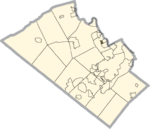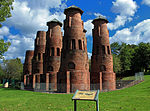Egypt, Pennsylvania
1733 establishments in Pennsylvania1733 establishments in the Thirteen ColoniesCensus-designated places in Lehigh County, PennsylvaniaPages with non-numeric formatnum argumentsPopulated places established in 1733 ... and 3 more
Unincorporated communities in Lehigh County, PennsylvaniaUnincorporated communities in PennsylvaniaUse mdy dates from July 2023

Egypt (Pennsylvania German: Iegypden) is an unincorporated community and census-designated place (CDP) in Whitehall Township in Lehigh County, Pennsylvania, United States. The population of Egypt was 2,588 as of the 2020 census.Egypt is located about 7 miles (11 km) north of Allentown and is part of the Lehigh Valley metropolitan area, which had a population of 861,899 and was the 68th-most populous metropolitan area in the U.S. as of the 2020 census.
Excerpt from the Wikipedia article Egypt, Pennsylvania (License: CC BY-SA 3.0, Authors, Images).Egypt, Pennsylvania
Church Street, Whitehall
Geographical coordinates (GPS) Address Nearby Places Show on map
Geographical coordinates (GPS)
| Latitude | Longitude |
|---|---|
| N 40.68 ° | E -75.53 ° |
Address
Church Street
Church Street
18037 Whitehall
Pennsylvania, United States
Open on Google Maps









